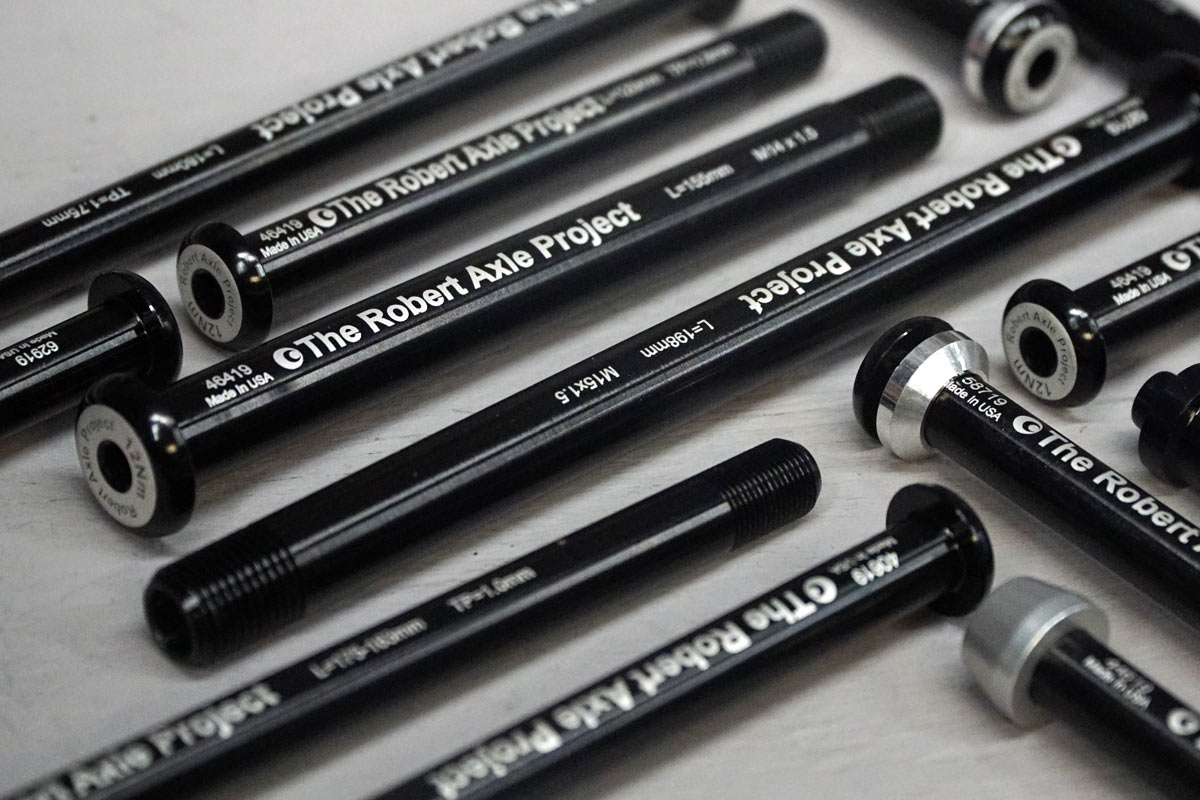Ever wonder why are thru axles different for every bike?
Why they’re different for road, gravel, cyclocross, mountain and fat bikes?
What’s the different between thread pitches? Why some are wider than others? The pros and cons of different designs?
All those questions and more, answered in this video with the pros at Robert Axle Project! We cover the complete range of thru axle options for all types of bikes, and explain why there are so darn many options!
Here’s what you need to know about Thru Axles:
- Every frame and fork needs a thru axle with the correct length and thread pitch
- Robert Axle Project makes replacement thru axles for most types of bikes, contact them for the right model for your frame or fork.
- Or use their Axle Finder on their website.
- They also make thru axles that let you attach trailers and stuff to your bike.
- Finer thread pitches (like 1mm) take longer to thread in, but hold more securely.
- Courser thread pitches (like 1.75mm) tighten faster, but won’t hold quite as tight.
- Some bikes, like Trek’s Split Pivot full suspension bikes, use thru axles that are up to 50mm longer than the hub dropout width.
- Most every modern disc brake road, cyclocross and gravel bike uses a 12×100 front hub standard, and a 12x142mm rear hub standard. UPDATE: Looks like there’s a new Road Boost standard too, so keep an eye out for 12×110 front hubs & 12x148mm rears.
- Mountain bikes have a lot more variation, but most modern bikes are at least Boost 12×148 rear, with some getting 12×158 Super Boost. When mountain bikes first went to thru axles, the standard was 12×142, which was the same effective width as the Quick Release hubs they replaced.
- Early cyclocross bikes borrowed the 15mm front thru axle diameter, but as disc brakes became more common on drop bar bikes, they all standardized to 12mm.
The most important thing to remember is that you need to order the correct length and thread pitch if you’re upgrading or replacing your thru axle.
Huge thanks to Robert Axle Project for supporting this video!
DISCLOSURE: Yes, Robert Axle Project chipped in financially to help produce us produce this content.
